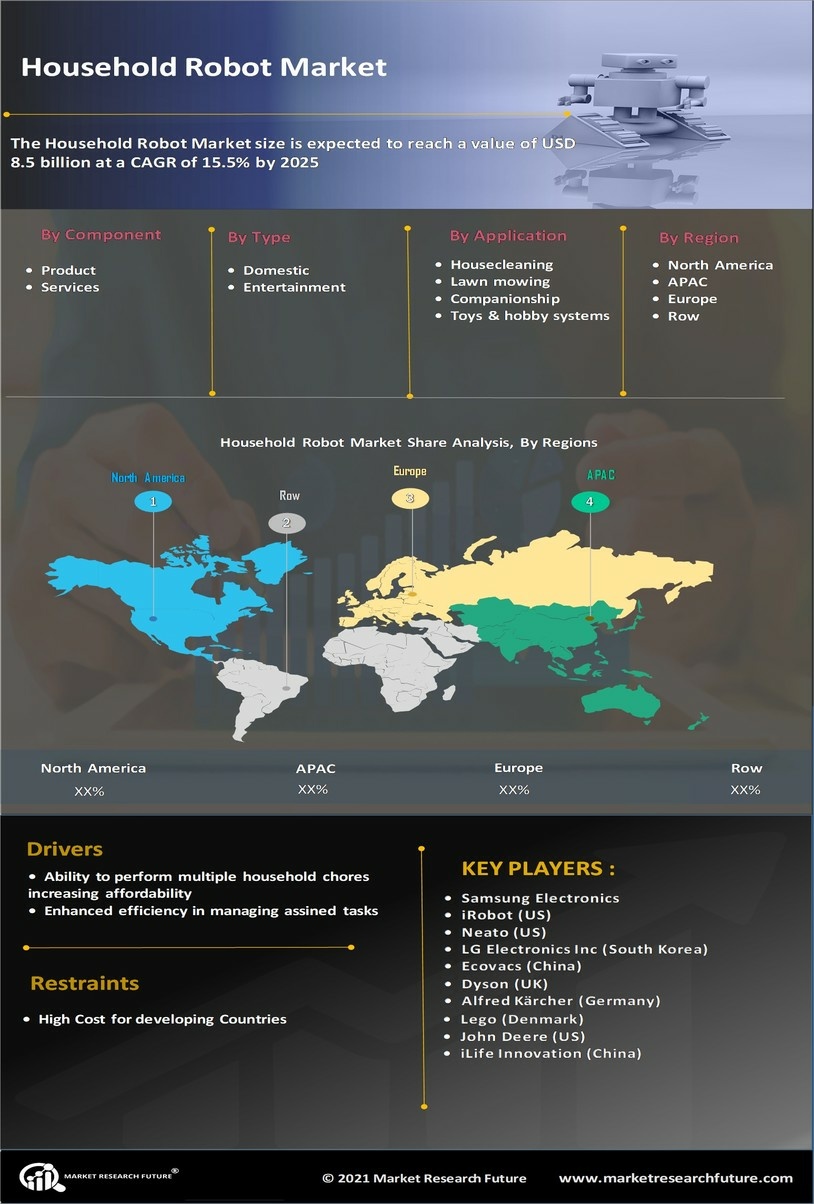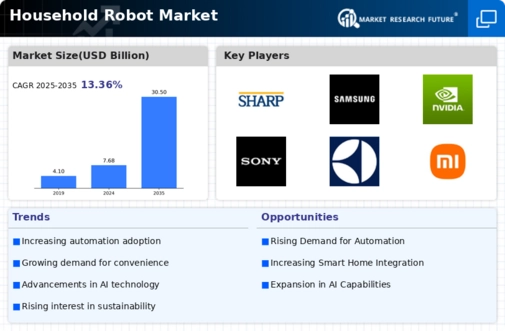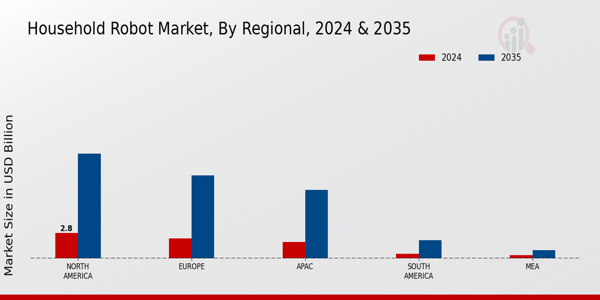Household Robot Market Summary
As per Market Research Future Analysis, the Household Robot Market is experiencing significant growth, driven by rising demand for automation in home management. The market was valued at 6.77 USD Billion in 2023 and is projected to reach 30.5 USD Billion by 2035, with a CAGR of 13.36% from 2025 to 2035. Key drivers include increased consumer awareness, technological advancements in AI and ML, and the growing trend of dual-income households seeking efficient solutions for daily chores.
Key Market Trends & Highlights
The Household Robot Market is evolving with notable trends and opportunities.
- Vacuuming robots are projected to grow from 2.7 USD Billion in 2024 to 11.5 USD Billion by 2035.
- The AI market is expected to grow at a CAGR of over 20% in the next decade, enhancing household robotics.
- Over 164 million households are expected to adopt automation by 2025, significantly increasing market acceptance.
- North America is projected to reach 11.5 USD Billion by 2035, leading the regional market.
Market Size & Forecast
| 2023 Market Size | USD 6.77 Billion |
| 2024 Market Size | USD 7.68 Billion |
| 2035 Market Size | USD 30.5 Billion |
| CAGR (2025-2035) | 13.36% |
Major Players
Key players include Amazon, Panasonic, Dyson, Neato Robotics, iRobot, SharkNinja, Ecovacs Robotics, Sony, Samsung Electronics, Bluefrog Robotics, Zebra Technologies, Miele, Roborock, and LG Electronics.













